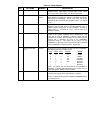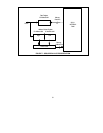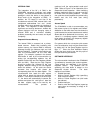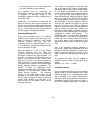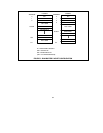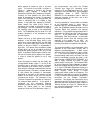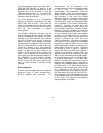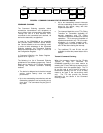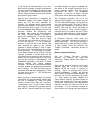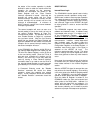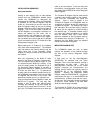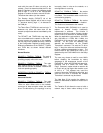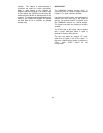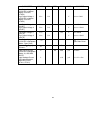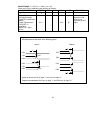38
In the Command Chaining Mode, at any time
after the first command is issued, the processor
can issue a second "Enable Transmit from Page
fnn" command. The COM20020 stores the fact
that the second transmit command was issued,
along with the page number.
After the first transmission is completed, the
COM20020 updates the Status Register by
setting the TTA bit, which generates an
interrupt. The interrupt service routine should
read the Status Register. At this point, the TTA
bit will be found to be a logic "1" and the TMA
(Transmit Message Acknowledge) bit will tell the
processor whether the transmission was
successful. After reading the Status Register,
the "Clear Transmit Interrupt" command is
issued, thus resetting the TTA bit and clearing
the interrupt. Note that only the "Clear
Transmit Interrupt" command will clear the TTA
bit and the interrupt. It is not necessary,
however, to clear the bit or the interrupt right
away because the status of the transmit
operation is double buffered in order to retain
the results of the first transmission for analysis
by the processor. This information will remain
in the Status Register until the "Clear Transmit
Interrupt" command is issued. Note that the
interrupt will remain active until the command is
issued, and the second interrupt will not occur
until the first interrupt is acknowledged. The
COM20020 guarantees a minimum of 200nS
interrupt inactive time interval between
interrupts. The TMA bit is also double buffered
to reflect whether the appropriate transmission
was a success. The TMA bit should only be
considered valid after the corresponding TTA bit
has been set to a logic "1". The TMA bit never
causes an interrupt.
When the token is received again, the second
transmission will be automatically initiated after
the first is completed by using the stored
"Enable Transmit from Page fnn" command.
The operation is as if a new "Enable Transmit
from Page fnn" command has just been issued.
After the first Transmit status bits are cleared,
the Status Register will again be updated with
the results of the second transmission and a
second interrupt resulting from the second
transmission will occur. The COM20020
guarantees a minimum of 200ns interrupt
inactive time interval before the following edge.
The Transmitter Available (TA) bit of the
Interrupt Mask Register now masks only the
TTA bit of the Status Register, not the TA bit as
in the non-chaining mode. Since the TTA bit is
only set upon transmission of a packet (not by
RESET), and since the TTA bit may easily be
reset by issuing a "Clear Transmit Interrupt"
command, there is no need to use the TA bit of
the Interrupt Mask Register to mask interrupts
generated by the TTA bit of the Status Register.
In Command Chaining mode mode, the
"Disable Transmitter" command will cancel the
oldest transmission. This permits canceling a
packet destined for a node not ready to receive.
If both packets should be canceled, two
"Disable Transmitter" commands should be
issued.
Receive Command Chaining
Like the Transmit Command Chaining
operation, the processor can issue two
consecutive "Enable Receive from Page fnn"
commands.
After the first packet is received into the first
specified page, the TRI bit of the Status
Register will be set to logic "1", causing an
interrupt. Again, the interrupt need not be
serviced immediately. Typically, the interrupt
service routine will read the Status Register. At
this point, the RI bit will be found to be a logic
"1". After reading the Status Register, the
"Clear Receive Interrupt" command should be
issued, thus resetting the TRI bit and clearing
the interrupt. Note that only the "Clear Receive
Interrupt" command will clear the TRI bit and
the interrupt. It is not necessary, however, to
clear the bit or the interrupt right away because



